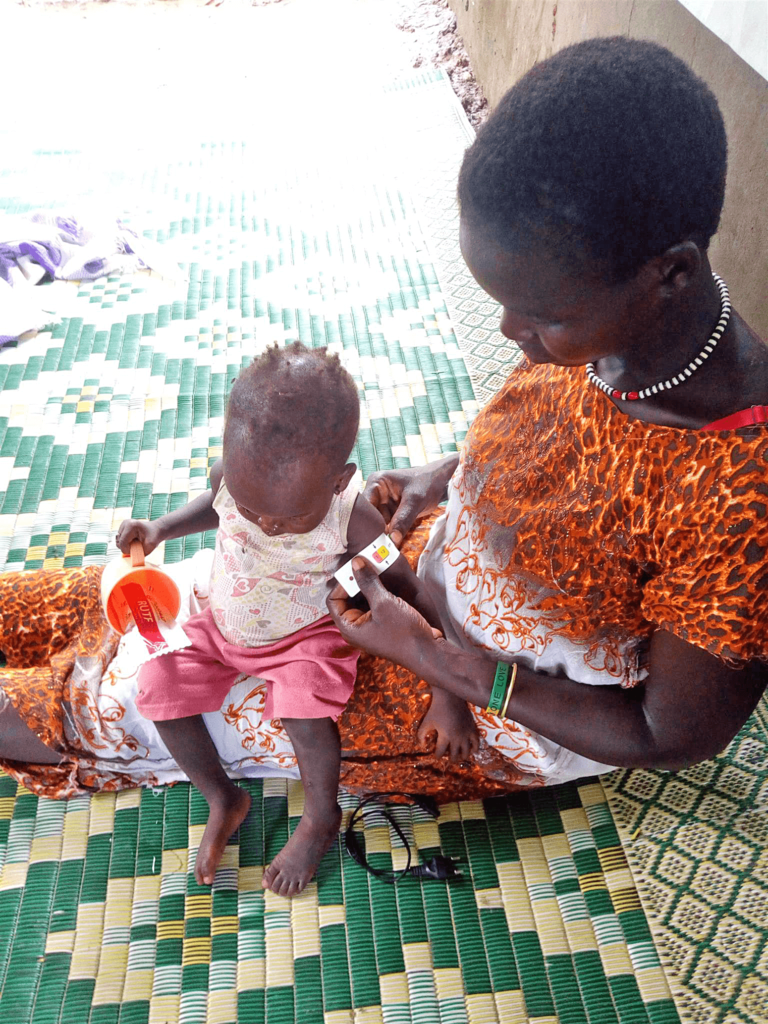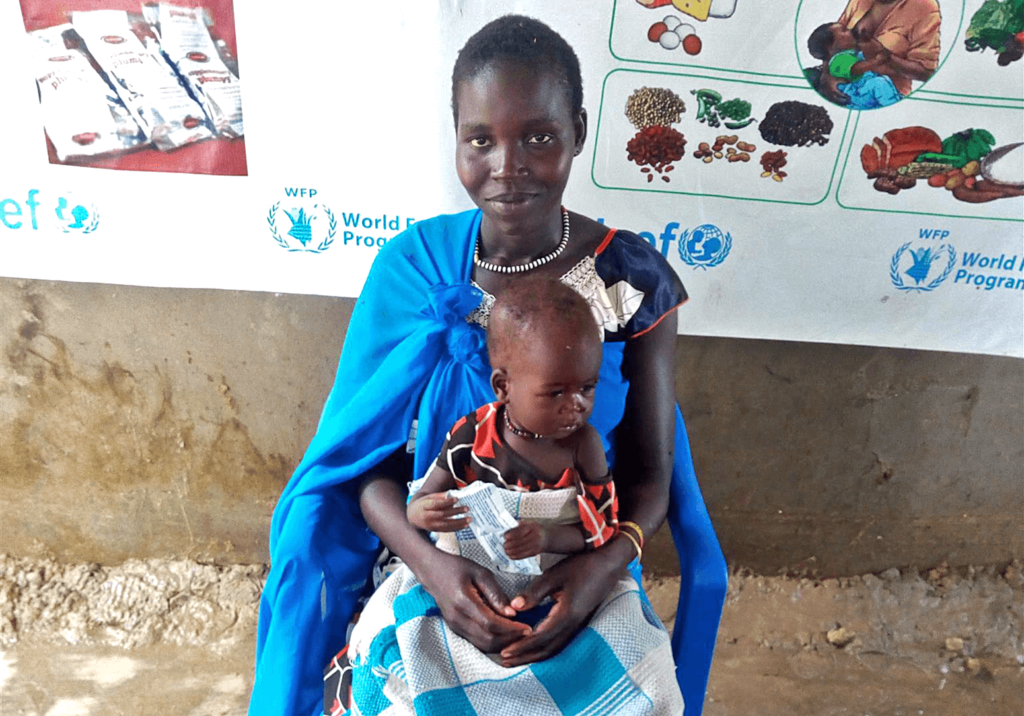When toddler Nyalak Kuon Mut was struck by lightning in June, she was already suffering from severe acute malnutrition.
“I could see how she became skinnier and weaker,” says her mother, Nyakuony Biliu. “She was struck by lightning and survived. Then she had serious vomiting and diarrhea and was treated for that as well, all within the month of June. I didn’t know what to do next.”
Nyakuony brought her daughter to an International Medical Corps-supported outpatient screening facility in Goa. Community nutrition volunteers and staff members working in our community nutrition program examined Nyalak, diagnosed her with severe acute malnutrition and referred her to our outpatient therapeutic program.

The program uses ready-to-use therapeutic food (RUTF) and routine medication such as amoxicillin syrup to treat patients. In addition, our staff provides information to caregivers on proper use and storage of RUTF at home, and recommends breastfeeding and complementary feeding practices to help ensure that the child will stay properly nourished after they complete treatment.
After two months, Nyalak’s condition improved and she was transferred to our targeted supplementary feeding program to complete her treatment.
Similarly, Nyahama Maliet was worried about her nine-month old son, Tut Gany Yoak. He was underweight and suffered from weakness, diarrhea and fever. She brought him to an International Medical Corps-supported nutrition facility in Nyal. Our team diagnosed him with acute severe malnutrition and, like Nyalak, enrolled Tut in our outpatient therapeutic program. After two months, he also was transferred to our targeted supplementary feeding program.
His mother, Nyahama Maliet, was referred to a support group for mothers, where our team shared information about nutrition, breastfeeding, hygiene and complementary feeding.
By September, Tut had fully recovered. When he was discharged, Nyalam received four weeks of RUSF to help ensure that Tut’s health remains strong.
“I am grateful for the treatment my son received through International Medical Corps,” says Nyaham. “I didn’t know if it was possible for him to get better.”
Addressing malnutrition is about more than saving the lives of seriously ill children, it’s also about ensuring that families know what preventative measures they can take to help their children survive and thrive. To encourage healthy behavioral changes in communities, International Medical Corps uses a model called the Family MUAC Approach, where mothers and other caregivers learn to identify the early signs of malnutrition in children by measuring their mid-upper arm circumference (MUAC).
Getting struck by lightning—and surviving—is rare. Surviving malnutrition can be easier, as long as families learn how to get their children the nutrition they need, to recognize signs of trouble and know where to get help. That’s why, together with UNICEF and the World Food Programme—winner of the 2020 Nobel Peace Prize—International Medical Corps runs integrated nutrition services for underserved populations around the world.
